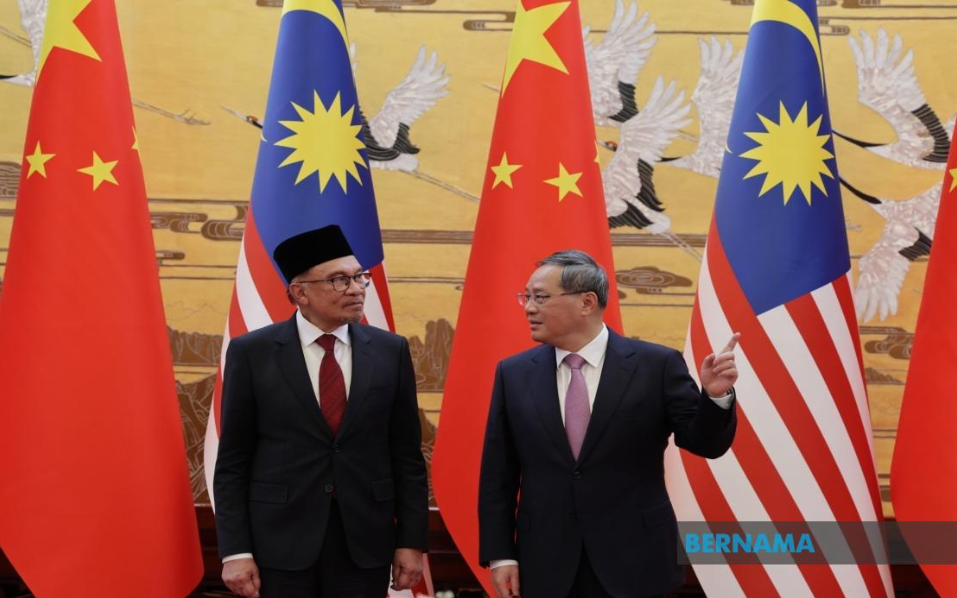DIGITAL ECONOMY WAY FORWARD IN ACCOMPLISHING BRI, BOOSTING INDUSTRY -- EXPERT

Digital economy should be the way forward as a major instrument in accomplishing China's Belt and Road Initiative (BRI) and boosting the industry's activities, said an expert.
Malaysian Communications and Multimedia Commission member Datuk Wei Chuan Beng said the digital economy is crucial for Malaysia as well as other neighbouring countries in elevating poverty via the idea of a digital village to improve healthcare, education and e-commerce.
“It is through the digital economy that we have seen how China has elevated their hardcore poverty,” he said during the CTGN-Bernama Belt and Road Special Joint Programme's talk show.
Additionally, he said the digital economy would also be a platform for the government to be more effective and efficient.
Earlier in April, Prime Minister Datuk Seri Anwar Ibrahim said Malaysia would continue to work with China in deepening the existing cooperation in the BRI and to expand economic cooperation in new growth areas such as green development and digital economy.
During the three-day visit to China, Anwar said Malaysia would work closely with other Asean member states to ensure that the Asean-China Free Trade Area (ACFTA) benefits all parties involved.
He said the ACFTA would not only deepen trade and investment within the region but also broaden economic benefits with the inclusion of new sectors, namely, digital economy, green economy, competition and consumer protection, as well as micro, small and medium enterprises.
Meanwhile, on investment opportunities, Beijing Belt and Road Cooperative Community president Han Ye said there are more areas for both sides to tap into and explore besides electric vehicles and internet connectivity.
“Maybe these areas are in different kinds of development stages, but certainly people could work harder to explore these areas such as the blue economy where both countries can have some transfer of technologies, increasing the seafood provision for both countries and also to increase the welfare of the livelihood.
“I also know that some internet applications, such as Little Red Book, are also very popular in Malaysia among youngsters.
“So, maybe alongside this kind of popular applications, I suppose there will be investment opportunities for the Chinese side to invest more into the Malaysian market and to explore this great potential market with an ever-growing population in your country,” she said.
Besides the East Coast Rail Link (ECRL), she noted that the two industrial parks, one in China and another in Malaysia, could also be a very good accomplishment in BRI investment.
Currently, Malaysia and China have participated in several collaborations, including the RM75 billion ECRL project, which is expected to be completed in December 2026 and ready for operation in January 2027.
Beijing Foreign Studies University's School of Asian Studies associate professor Song Qingrun also commented that China had gained a lot from the bilateral relationship and economic development of both sides under the BRI framework.
“This is particularly true in its investments in auto manufacturing products, mobile smartphone products and also the industrial parks where China have invested a lot in Malaysia. China has earned some profits,” he added.
China remained Malaysia's largest trading partner for 14 consecutive years, with a total trade of RM488 billion in 2022.
On the investment front, China was the biggest foreign direct investor in Malaysia last year, with investments amounting to RM55.2 billion.
According to statistics from the Foreign Affairs Ministry, total exports to China grew 9.4% to RM210.6 billion in 2022, while total imports from China stood at RM276.5 billion in the same year, or up 20.7% compared to the previous year.
